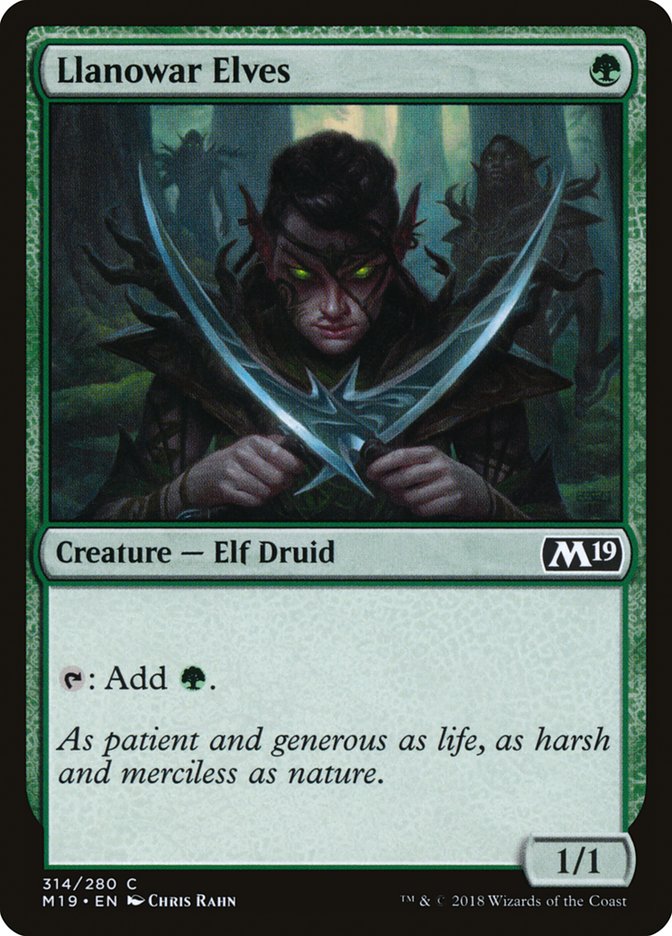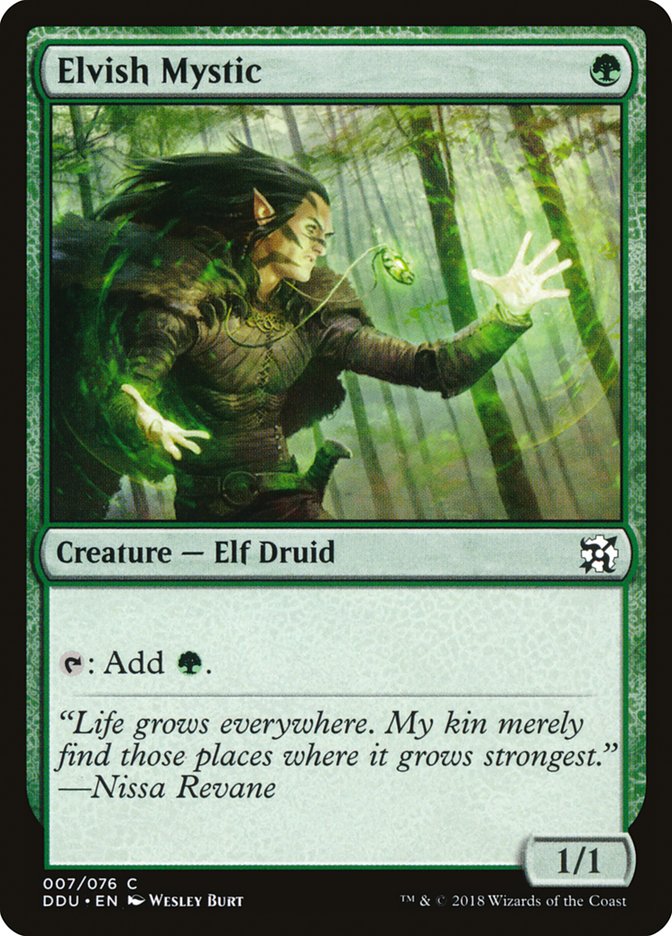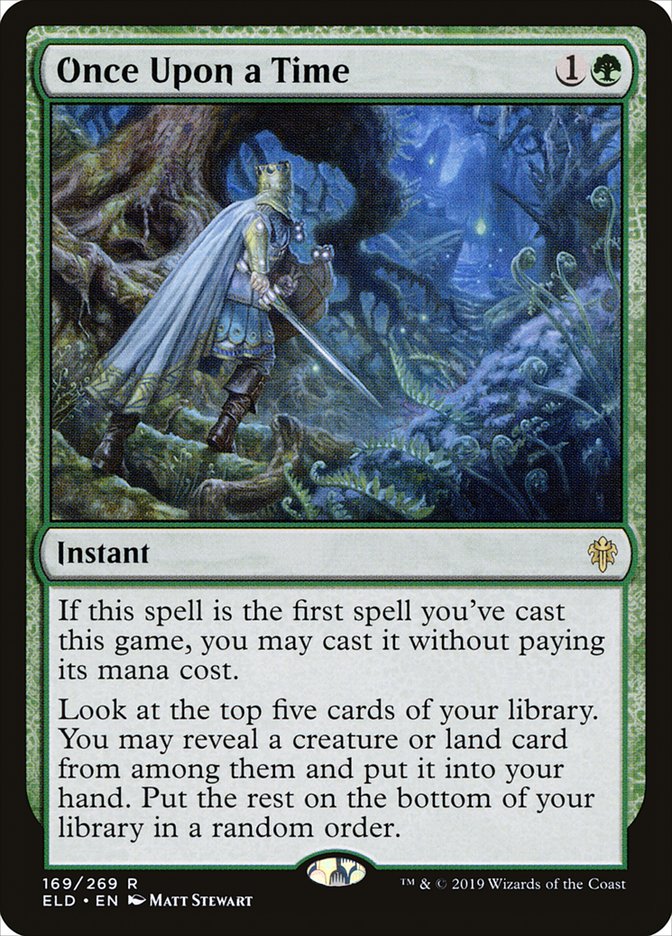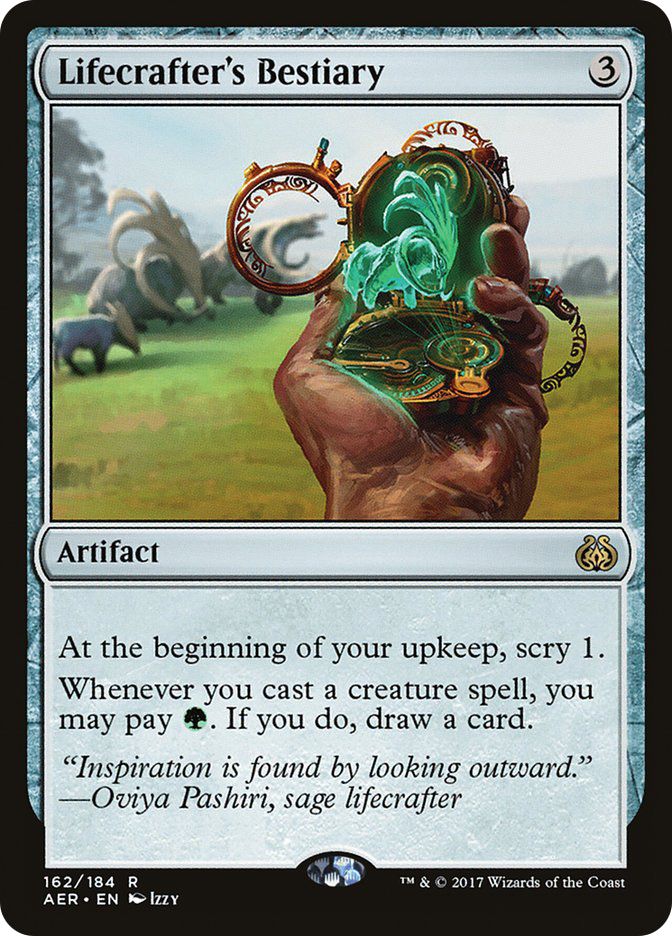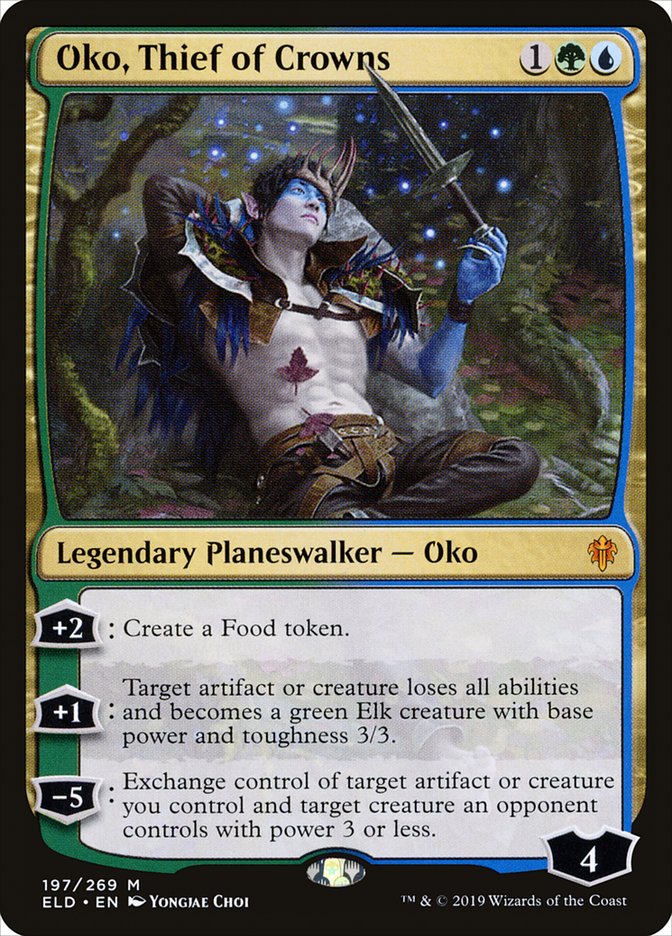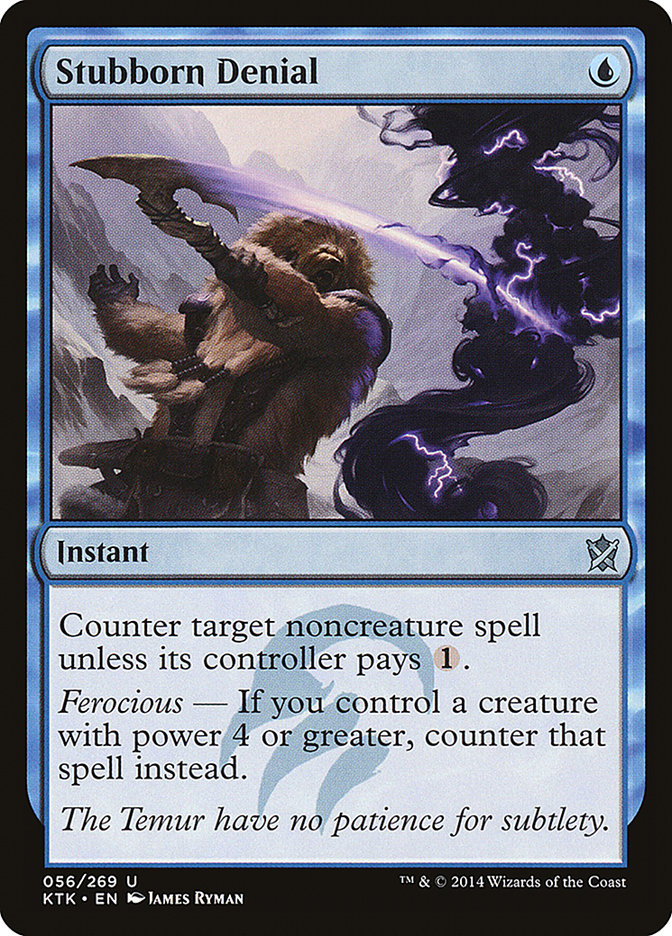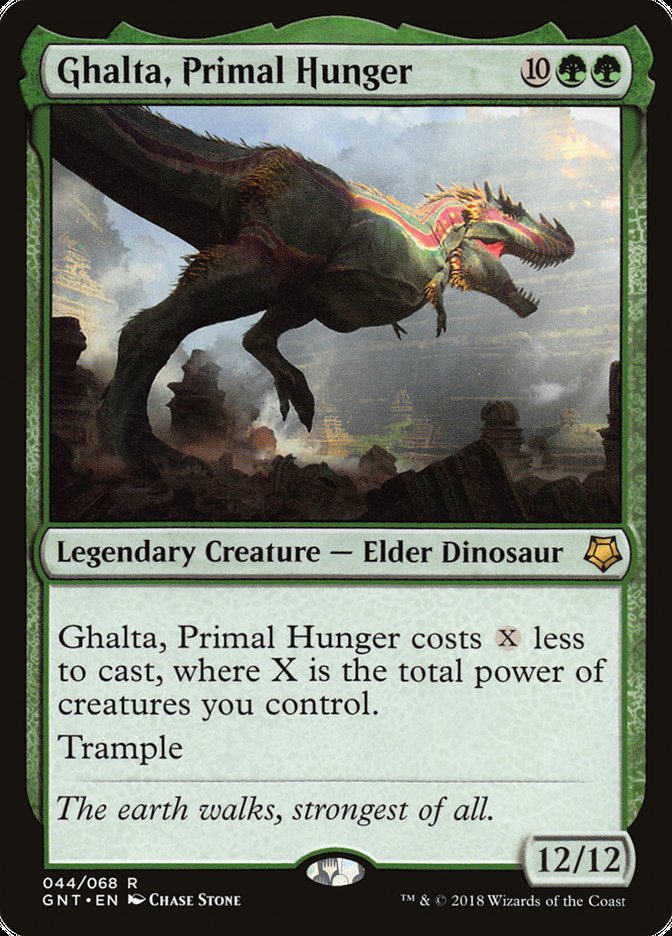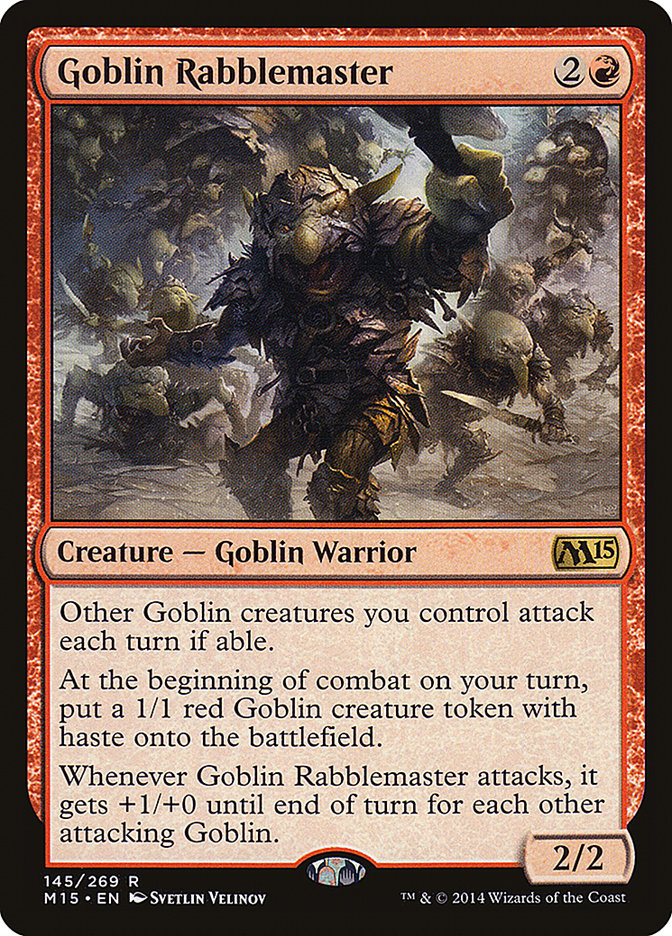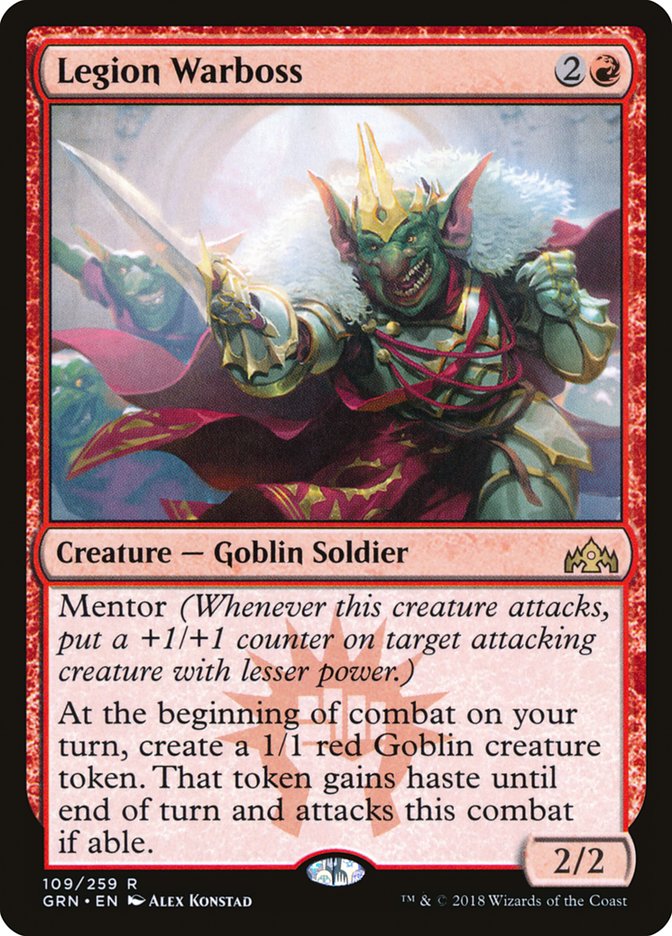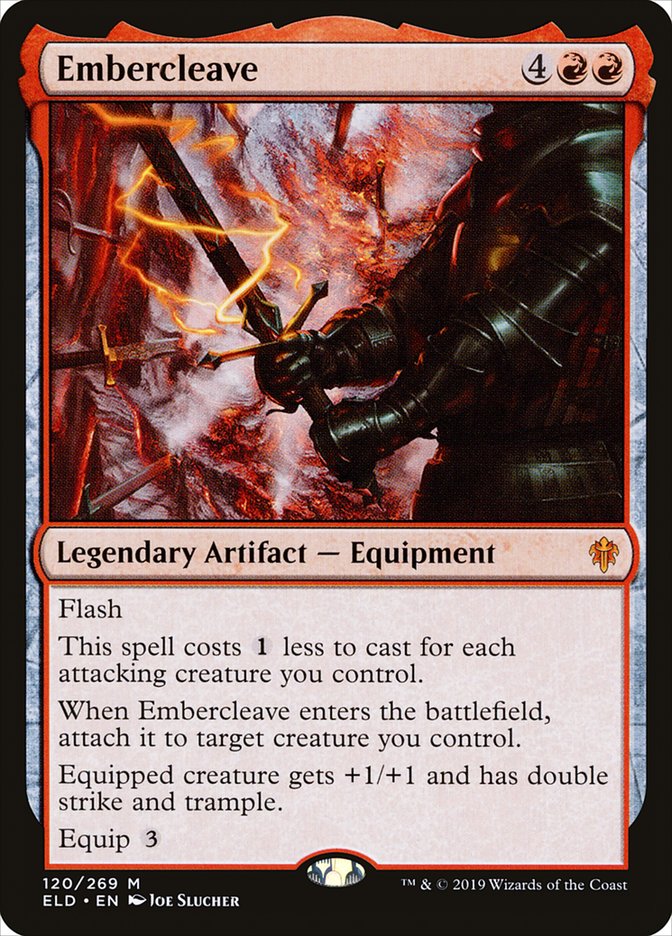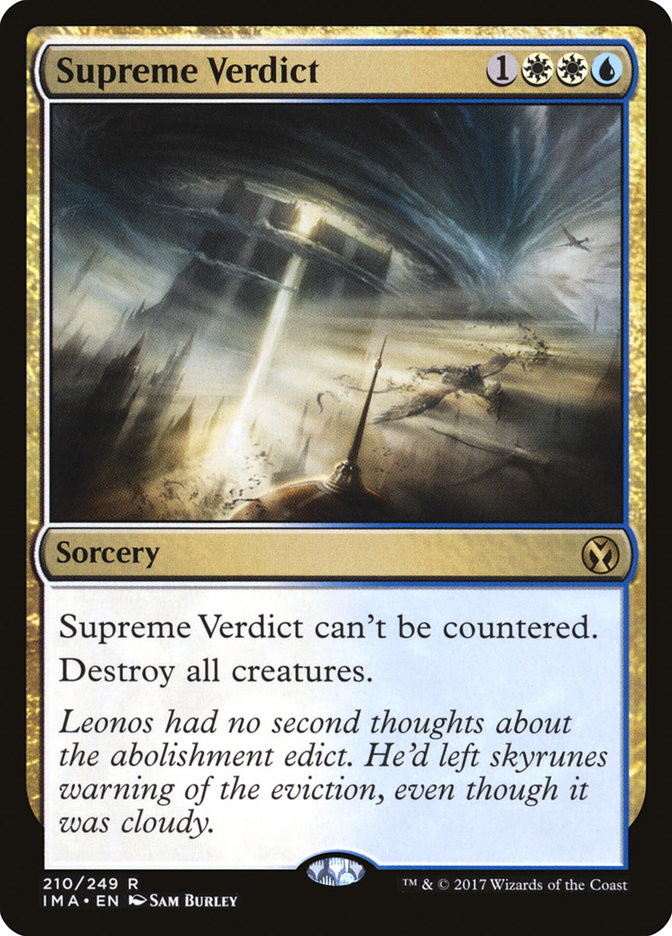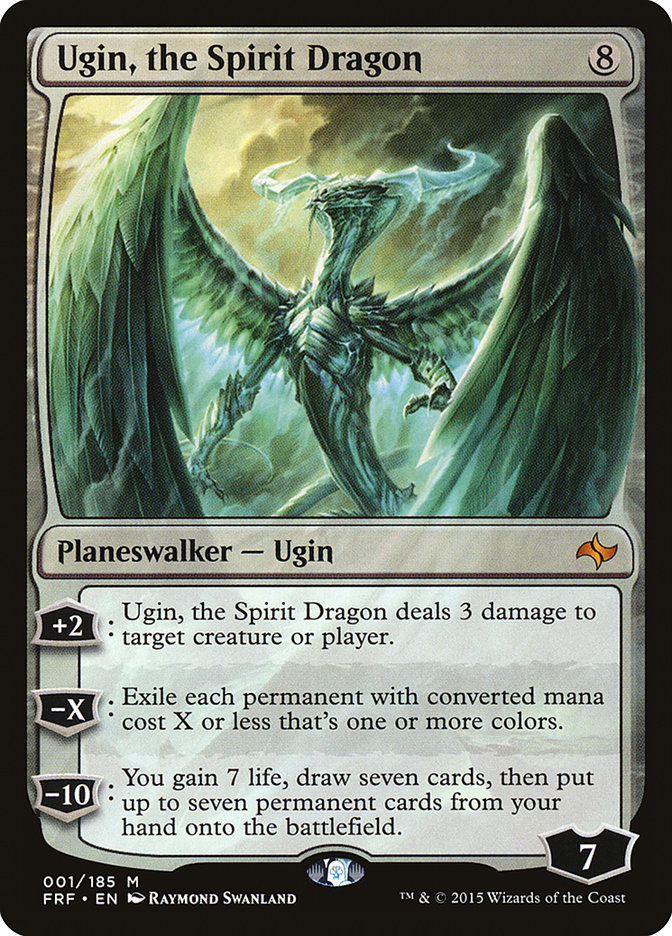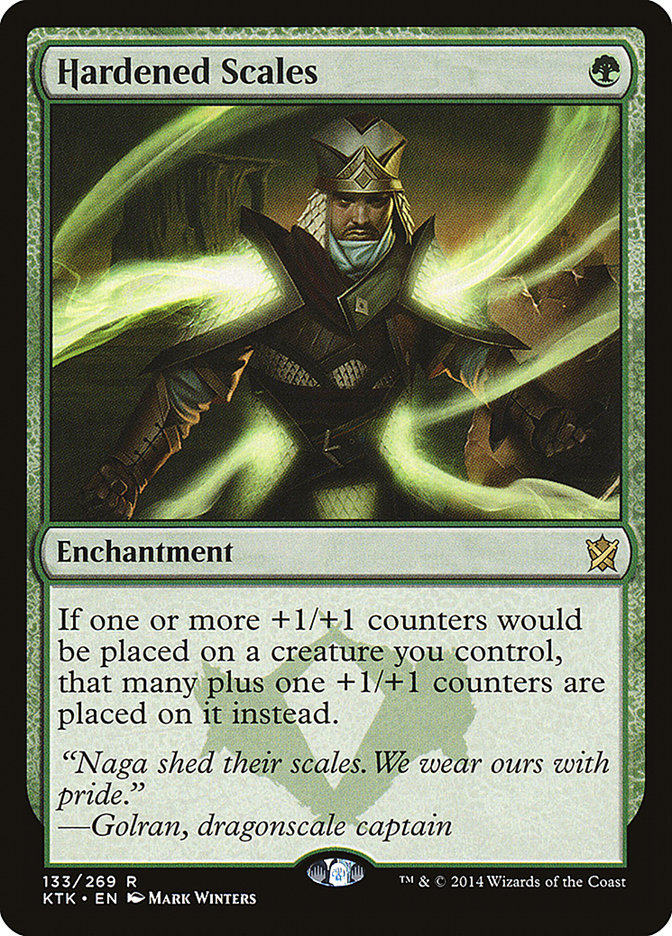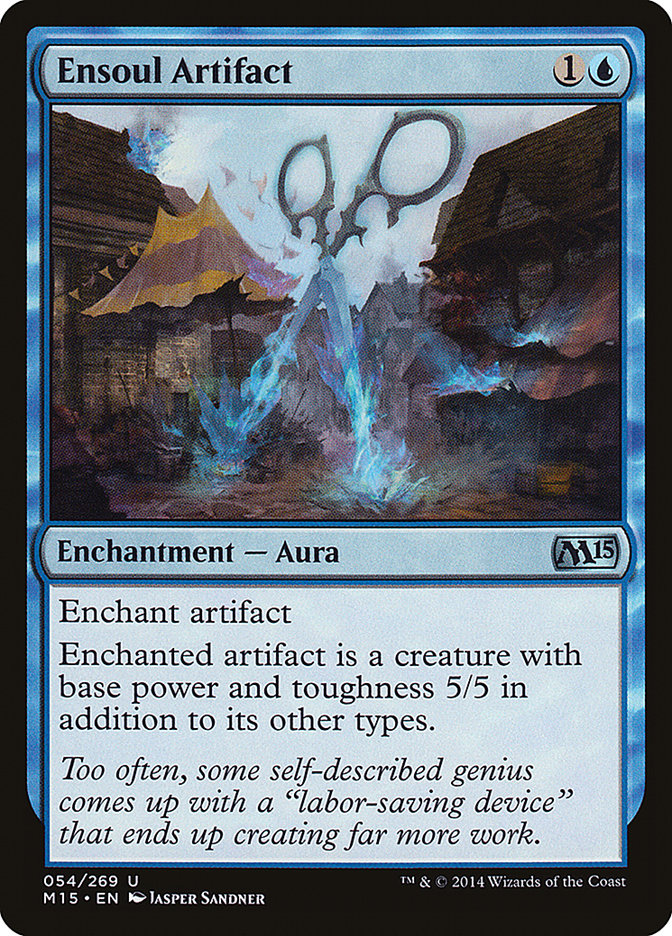In 60 BCE, Crassus, Pompey, and Julius Caesar formed the First Triumvirate, a tenuous alliance which effectively ruled Rome until Crassus’s death seven years later. Individually, their wealth and power could only amount to so much, but together they were able to take control of a nation.
Another threesome is establishing its dominance over Pioneer. Llanowar Elves, Elvish Mystic, and Once Upon a Time were all over the top tables of both the Pioneer PTQand Pioneer Challenge last weekend. Mono-Green Devotion was supposed to be neutered with the banning of Oath of Nissa and Leyline of Abundance, but Todd Anderson continued to refine the archetype and carried it to another undefeated finish in the Swiss, only to be felled in the elimination rounds. And mirroring last week, many players took their cue from his early finish and took the same deck to the Challenge, dominating the event with six copies in the Top 8.
But the bannings did have one significant effect – they led players to look for other avenues to utilize their mana creatures, and several of those were successful. We’ll get to the specific lists later on, but suffice it to say that getting aggressive by accelerating out powerful three-drops like Lovestruck Beast, Goblin Rabblemaster, and Steel Leaf Champion is a solid plan in Pioneer right now.
These decks will form a significant portion of the Pioneer metagame this weekend at the Season Two Invitational, so today I’ll focus on what makes this core so good, go over the various flavors of Triumvirate decks, and discuss potential ways to combat them.
The Three Metrics of Deck Strength
When I evaluate decks, there are three things I’m looking for: power, consistency, and versatility. Loosely put, power is a deck’s ability to impose its will on another. If both decks accomplish what they are trying to, which deck comes out on top? For an individual case, this is obviously contextual. Three decks could exist in a rock-paper-scissors relationship where one beats the second beats the third beats the first and no one deck has an advantage in the aggregate over the other two.
But in most cases, there’s a small but significant difference from one deck to the next, and the threats in green decks seem to be a cut above the rest. One thing I noticed in testing the format is that the available two-mana plays looked rather weak. However, the three-slot was stacked, leading to a lot of decks with awkward curves. Llanowar Elves and Elvish Mystic are ideal in such a metagame, allowing their controller to start casting the powerful three-mana cards in Pioneer a turn early, gaining initiative in every matchup.
Llanowar Elves and other mana creatures aren’t the flashiest cards, but their simplicity belies a great power. In 2019, tempo is just as important, if not more important, than card advantage, and mana creatures are a low investment that provide a significant tempo advantage every turn you untap with them in the early game. In this lens, I don’t think it’s far-fetched to say that Llanowar Elves is at least as powerful as Dark Confidant, which provides a similar effect along a card advantage axis.
The next metric, consistency, is where Once Upon a Time comes in. The downside of playing mana creatures is that once you build your curve to maximize their effectiveness, your draws without them are a steep dropoff from those that do. Having a redundant Elf is huge here, increasing your chances of having a copy in your opening seven from 40 percent to 65 percent. When you add Once Upon a Time to the mix, you’re up to about 74 percent. Now obviously you have to have the lands to make your hand functional, but these numbers don’t take into account being on the draw or mulligans, so I still find them impressive.
These decks start with a mana creature much more often than their opponents have an answer for one, and with the bevy of quality three-drops available, it’s near a foregone conclusion that the Elf will be followed by a threat that demands a fast answer. And of course, Once Upon a Time becomes a threat when you already have the mana creature, or if you draw it later in the game. With the diminishing returns that mana creatures have, it’s undoubtedly a better addition to the deck than Fyndhorn Elves would be.
The last metric, versatility, is where these decks falter. They don’t interact that well, and they’re mostly reliant on establishing an early lead and pressing that advantage with more threats until the game is over. In the event that they do stumble or your removal lines up well against their threats in the early turns, they only have more of the same stuff to throw at you. But this metric is the easiest to mitigate in sideboarding. Some planeswalkers, narrowly powerful removal, and threats like Tireless Tracker go a long way, so if you’re going to pick two out of three to focus on in your 60, this is the one I’d ignore.
The Various Green Triumvirate Decks
Creatures (27)
- 4 Llanowar Elves
- 3 Scavenging Ooze
- 4 Burning-Tree Emissary
- 4 Elvish Mystic
- 4 Walking Ballista
- 4 Jadelight Ranger
- 4 Voracious Hydra
Planeswalkers (8)
Lands (21)
Spells (4)

Mono-Green Devotion is the original and most powerful of the Triumvirate decks, and continues to put up significant results despite having two cards taken from it only a week ago. Todd retooled his list to take a more aggressive bent, moving up to the full four copies of Vivien, Arkbow Ranger and replacing Courser of Kruphix with Jadelight Ranger. But with eight planeswalkers and eight X-spells, there’s plenty of late-game power left in Mono-Green Devotion.
Relative to the other Triumvirate decks, this list trades some consistency since it’s the most reliant on generating extra mana for extra power, as it’s the best at utilizing that extra mana. That trade makes removal more effective against the Devotion decks, hence the inclusion of Lifecrafter’s Bestiary in the sideboard to dig towards extra land drops early and keep the threats flowing once you have enough mana.
With two straight strong weekends despite the ban in the middle, it’s hard to say anything but Mono-Green Devotion is the default best deck in Pioneer, and a strong choice for this weekend even with a huge target on its back.
Creatures (26)
- 4 Llanowar Elves
- 4 Elvish Mystic
- 1 Surrak, the Hunt Caller
- 1 Rhonas the Indomitable
- 3 Ghalta, Primal Hunger
- 4 Steel Leaf Champion
- 2 Gilded Goose
- 4 Lovestruck Beast
- 1 Questing Beast
- 2 Yorvo, Lord of Garenbrig
Planeswalkers (4)
Lands (20)
Spells (10)
Sideboard

The Simic Aggro gameplan is as straightforward as possible:
- Turn 1: Mana creature
- Turn 2: Creature with five power
- Turn 3: Profit
In a format without fetchlands, Fatal Push has a hard time answering three-mana creatures, and with the prevalence of mana creatures, there’s a premium put on one-mana removal. As a result, playing mana creatures with solid three-mana creatures not only creates a natural curve, it also puts your opponents in a squeeze where their removal rarely answers both parts of your deck. They can either let you have your mana creature and fall behind on tempo, hoping to match you with removal all the way up the curve, or try to stifle your mana and put you behind, but either plan is tenuous and will fall apart with a single stumble.
And as I noted above, this deck is not going to stumble very often with eight mana creatures, four copies of Once Upon a Time, and eleven quality three-drops. The light splash for Oko, Thief of Crowns and Stubborn Denial gives Simic Aggro just enough interaction to handle problematic creatures and key spells from control and combo decks like Simic Nexus.
I also particularly like the inclusion of Ghalta, Primal Hunger, which is a means to go over the top of any deck which tries to trump you on the battlefield. Against heavy removal decks, we once again see Lifecrafter’s Bestiary in the sideboard, but the removal options in Simic are rather weak. With lots of extra mana, the Devotion decks get to interact with Voracious Hydra and Walking Ballista, but Simic Aggro is relegated to Sleep and Prey Upon.
Mediocre removal means this deck gets punished more heavily when it stumbles, since it’s relying on its big creatures to stabilize the battlefield. They’ll do that some portion of the time, but it’s a weakness to exploit with big flyers or other evasive threats that force Steel Leaf Champion and company to race.
Creatures (27)
- 4 Llanowar Elves
- 1 Ghor-Clan Rampager
- 4 Elvish Mystic
- 4 Goblin Rabblemaster
- 2 Hazoret the Fervent
- 4 Legion Warboss
- 4 Lovestruck Beast
- 3 Questing Beast
- 1 Bonecrusher Giant
Lands (22)
Spells (11)
Sideboard

Gruul Aggro is similar to Simic in that it just wants to cast powerful three-drops on Turn 2, but this time we’re using Goblin Rabblemaster and Legion Warboss, which run away with the game just as quickly as Steel Leaf Champion despite their smaller stats, and they can leave behind a token or two for your troubles should they be removed.
Having so many army-in-a-can-type cards makes me prefer this to Simic in control matchups. However, those tokens are often eaten by opposing creature decks. Smuggler’s Copter prevents that, letting you crew in the beginning of combat step, after the token has been made but before it’s forced to attack. In the case of Goblin Rabblemaster, you can crew with any number of Goblins you don’t wish to attack with, biding your time before making one big attack.
That tactic plays nicely with this deck’s means of going over the top: Embercleave. This deck weaves between being a go-wide and go-tall plan, and Embercleave plays perfectly in such a deck, letting you cast it rather cheaply, yet attach it to a large creature to maximize its damage output.
My issue with this strategy is that by turning to the 2/2 Goblins instead of more big creatures, you allow removal spells like Wild Slash to overlap, answering either your mana creature or your threats. Against red aggro decks that’s going to be a problem, but you’ll be better off against nonred removal.
That difference comes down to metagame concerns, but the bigger downside here is the manabase. Aggro decks in Pioneer really want to be in enemy-color pairs so they can access the fastlands and painlands rather than checklands and Shadow lands. The former are much more consistent at giving you access to your colors on the early turns, and in a deck that wants to curve a green one-drop into a red three-drop, that color access is important. We could mitigate the issue by moving up to four copies of Once Upon a Time here, but that only does so much.
Combating the Triumvirate
Yesterday’s Veil of Summer ban certainly helps here, but overloading on black removal spells or counters won’t be enough against such a powerful, consistent core. In order to beat the Triumvirate you need to capitalize on their weakness in versatility or effectively trump them on the battlefield.
For the first method, there’s no better card than Supreme Verdict. These decks all play hard to the battlefield and don’t have much recourse against having all their permanents removed in one fell swoop. You’ll need to supplement those Verdicts with removal for Vehicles and Lifecrafter’s Bestiary, but there are plenty of options for that.
Azorius Control decks have been floating around since the beginning of Pioneer, but a definite list has yet to come together. Right now the format is full of creature decks, and counterspells get a boost with the removal of Veil of Summer. With a clear target and a relatively narrow format, now is the time to capitalize with a well-tuned control list.
Ugin, the Spirit Dragon is another nice sweeper, and Mono-Green Ramp has been doing fairly well, but in my experience that deck really misses the mark when it doesn’t have Arboreal Grazer on Turn 1 against an aggressive deck, since without one it’s not casting a big spell before Turn 5. Once Upon a Time can only do so much.
As far as the other method, you have to look for powerful synergies. These decks are all removal-light, so you should be able to assemble them as long as your deck is finely tuned. Simic Nexus capitalized on this in Week 1 of the format, but Stubborn Denial and Wild Slash in the aggro decks scares me there. Still, it’s a strong option against Mono-Green Devotion.
The two best synergy-driven decks in Pioneer right now are Hardened Scales and Izzet Ensoul. Both have very powerful draws that will trump what the Triumvirate decks are doing, but by virtue of being synergy-driven they are more vulnerable to disruption, and neither likes to see cards like Reclamation Sage and Unravel the Aether on the other side of the table.
The issue with going down this line is consistency. These kinds of decks are usually trying to leverage specific build-around cards that are very powerful in the right context, and finding those cards in a relevant time frame is tough, especially when the best cantrip in the format is Once Upon a Time.
I’m sure everyone expected decks with Llanowar Elves and Elvish Mystic to be powerful in Pioneer, but I expected other powerful one-drop pairs like Monastery Swiftspear / Soul-Scar Mage or Toolcraft Exemplar / Thraben Inspector to make their presence known. So far it’s been the green creatures, bolstered by their ally Once Upon a Time, that have Pioneer in a stranglehold. And given my love of Elves, it’s going to take quite a lot for me to not join them this weekend for the Invitational, Veil or no Veil.


